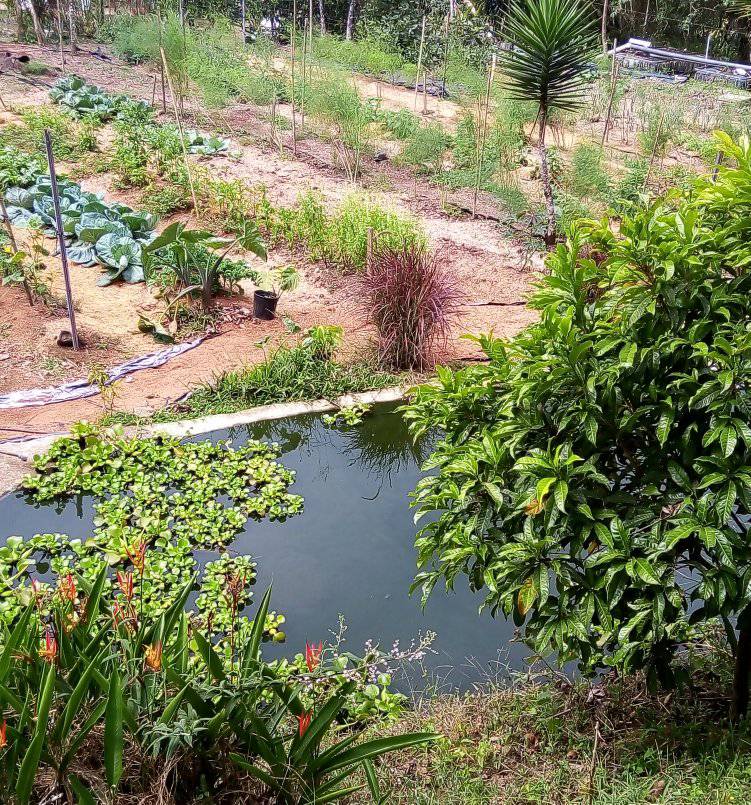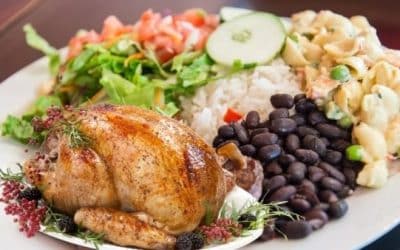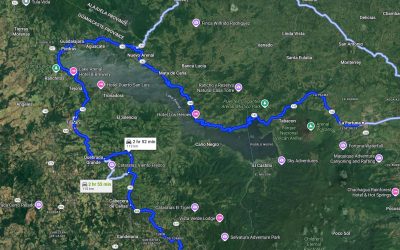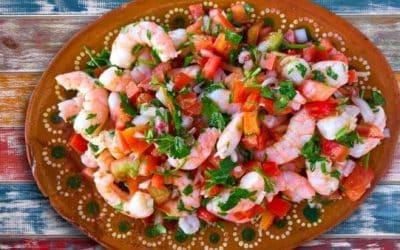Hola! from Gringo Gardeners in Costa Rica! We’re a Facebook group with over 5,000 members, dedicated entirely to gardening successes and challenges in this wonderfully diverse country that we live in. I started the group eight years ago, after I moved from growing zone 2 in Canada to zone 13 in Costa Rica and found my gardening knowledge doing more harm than good. I needed help! It started with a few of us, exchanging knowledge, asking questions, becoming friends and building community. I never expected the group to grow to what it is now.
Growing conditions are extremely diverse in Costa Rica because of the many micro-climates. Each area of Costa Rica has its own gardening challenges to consider. Instead of four seasons we have two — dry and rainy. A problem solved for one member of our group might not work for another a mere 20 kilometers away.
When I moved to Quepos/Manuel Antonio from Saskatoon, Canada, finicky houseplants suddenly became thriving weeds that grew in ditches. Alocasia (elephant’s ear), anthurium, caladium, philodendron, dieffenbachia, canna lily, monstera, schefflera (umbrella plant) and dracaena were everywhere. The land of petunias and marigolds was left behind and there were so many new and exciting things to try.
Try and learn
Gardening in a new location is all about experimenting and gathering knowledge wherever you can find it. If you absolutely must recreate what you had before, keep in mind that Costa Rica has regulations regarding the importation of seeds and plants. Permits are required for good reason — we’ve all heard stories of a non-native species taking over with devastating results to the ecosystem.
There are some plants that will thrive pretty much anywhere in the country. Consider croton, which provides a wide range of colorful striped and mottled green, red and yellow foliage. Another favorite is sansevieria (snake plant), which is virtually indestructible. I like to cut off a few leaves at the base and stick them in a vase with water. Not only are they a great filler for floral arrangements, they’ll develop roots and you can replant them outside. Many plants here follow the “stick it in the ground and it will grow” premise.
Shannon recommends vetiver grass for slopes that need erosion control. It’s beautiful and functional at the same time. I like peanut grass (mani) which is also common as a ground cover. The small yellow blooms are an added bonus — just look out for the neighbor’s cows, who would be more than happy to wander over and sample it. Shannon also favors Ixoras (jungle geranium) for a low maintenance, blooming hedge or border. Hibiscus works well as a slightly higher and more dense hedge or privacy screen and the blooms are lovely.
Nel, in San José, can’t say enough about spider plants, wandering jew and butterfly bushes, which grow pretty much anywhere. Her favorite is juanilama (lemon verbena). In her words, “you can’t kill those things.” Her perennial herb garden includes basil, rosemary, thyme, parsley (both Italian and curly), tarragon, thyme, verbena and mint.
No maintenance
Erin, in Heredia, loves native plants like canna lilies and heliconia, which can die off in dry season but come back as soon as it starts to rain again. They require zero maintenance. She doesn’t bother planting tomatoes, which can sometimes be difficult. Instead she lets the delicious, small, wild tomatoes grow willy-nilly.
I’m also a huge fan of plants that grow naturally where you live. For myself in Quepos/Manuel Antonio, those included shampoo ginger (maracas), plumeria, bromeliads, sky vine, elephant ear, peace lily, purple shield, golden shrimp plant, Mexican coral, “yesterday-today-tomorrow” plant and trumpet vine.
Shannon, in Bejuco, grows 15 types of bananas. Some of the most popular varieties are square, red, finger and plantains (who doesn’t love patacones con salsa fresca?). She encourages people to plant pineapples and fruit trees (space permitting) since they are easy to grow and low maintenance. Shannon has papaya, cacao, guanabana, mimbro, jackfruit and limon mandarina trees among others. Grafted fruit trees are preferable as they bear fruit sooner, and can often be found at your local greenhouse (vivero). At sea level, oregano (including Cuban/Mexican), juanilama, lemon grass, wild cilantro and rosemary grow really well. Basil is hit and miss because of the heat and salt air.
Space considerations
According to Jan in Grecia, it all has to do with how much space you have. The exotics are all there to enjoy at your local feria if you don’t have the room to grow them yourself. She took out her mango tree because it was shading everything and mangos are very inexpensive to buy when in season. (On a personal note, I’m not fond of them, either. In my experience they break windows if you park underneath them, make a lot of noise falling on a tin roof and stink to high heaven when they rot on the ground.) Jan doesn’t bother with cabbage as the insects usually get it all. She likes basic herbs and vegetables that are easy to grow, like tomatoes, peppers, lettuce, green onions, parsley, basil, oregano and thyme. Personally, I could go on about spicy peppers forever …
Here are some favorite, eco-friendly tips from Steve in the San Ramón area, for those of you with larger spaces to maintain. Collect rainwater. You will feel good utilizing it, even if it’s a barrel to start. Water from tanks or ponds can be stored for garden use, using gravity for pressure. Keep soil covered with mulch or plant material. Make compost. Or better yet, vermicompost. Trees are easier than veggies and annuals. They contribute in many ways for years to come. Prevent erosion on your land. Retain topsoil with plantings and swales. Diversity is great for diet, also for wildlife, however it does require more patience, care and knowledge to maintain.
Marching away
The biggest challenge to gardeners countrywide are those meandering paths of moving green leaves disappearing into the jungle, leaving your bare branch garden behind. Yes, we’re talking about leaf cutter ants. They’re actually beneficial to the environment but it’s painful to watch your precious, nurtured plants march away into a jungle of seemingly untouched greenery. Shannon has the following advice.
Leaf cutters are smart and quickly learn to avoid chemicals. Grit your teeth and leave them alone if they’re stripping a strong, hardy plant which will come back. Plant things you know they like in far corners to encourage them to stay there. If they’re stripping something delicate, the white rice method seems to work the best, although it takes a few days. Buy a large bag of white rice and wait for a dry day with no possibility of rain. Spread the rice around the bases of the affected plants and along the ant highway. Don’t touch the rice with your hands, just sprinkle it directly from the bag or a small container. The ants will take it back to their nest where the humidity causes the rice to expand and block off their tunnels. It’s also harmful to the fungus that the ants grow in their nests for food.
To sum it up, gardening in Costa Rica can be as simple or as challenging as you want it to be. There are almost unlimited options — far too many to discuss in a single article. If you’d like to know more, our mascot (Mr. Prick) invites you to come and join us on Facebook! We work hard to ensure the group is a safe, welcoming space, without advertising, where you can ask questions, share what you know with other gardeners, show off your photos, find local names for plants, and search for specific posts about whatever you’re interested in. We look forward to meeting you!
Pura vida and good gardening!
Gringo Gardeners in Costa Rica






